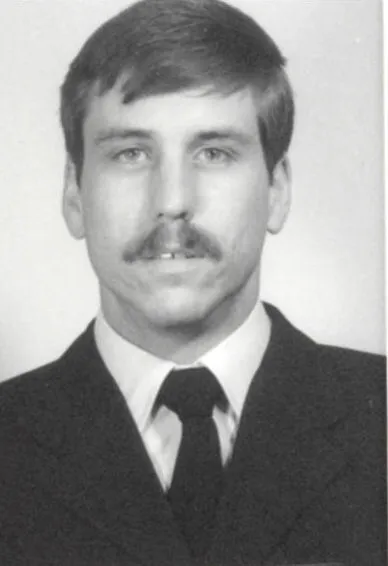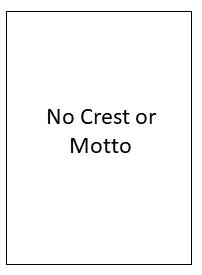Leuty, Timothy Kirk (Captain)
Killed in Flying Accident 1990-April-17


Birth Date: 1959-December-24
Born: St. Thomas, Ontario
Parents: Son of Stanley Leuty of Meaford, Ontario.
Spouse: Husband of Barbara Ann Leuty and father of Michelle, Daryl and Nina Leuty of Weitenung, West Germany.
Home: St. Thomas, Ontario
Enlistment: London, Ontario
Enlistment Date: 1983-July-14
Service
RCAF
Unit
439 Sqn- Squadron
Fangs of Death
Base
Rank
Captain
Position
Pilot
Service Numbers
T47555387
Crew or Other Personnel
Hornet (CF-188) 188765
Hornet (CF-188) serial: 188765

(Source RCAF Web Page)
The CF-188 Hornet, commonly called the CF-18, is a multi-role fighter aircraft. It is used for air defence, air superiority, ground attack, tactical support, training, aerobatic demonstration, and aerospace testing and evaluation.
The Hornet is a fast, light and manoeuvrable aircraft. Because of its power, speed and target-tracking capabilities, it has had great success in many military operations in Canada and around the world.
CF-18s have supported North American Aerospace Defence Command (NORAD) air sovereignty patrols and participated in combat during the Gulf War in 1991, the Kosovo War in the late 1990s, and as part of the Canadian contribution to the international Libyan no-fly zone in 2011. CF-18s were also part of the Canadian contribution to the military intervention against ISIL, Operation Impact. RCAF Web Page and Wikipedia
Unit Desciption
439 Sqn Fangs of Death ("Westmount")
History of the Squadron before and during World War II (Aircraft: Hurricane IV, Typhoon IB)

[ Note that during WWII the squadron did not have a badge nor a motto. These were awarded later.]
No 439 (F) Squadron was formed in Rockcliffe, Ontario  as No. 123 (Army Co-operation) Squadron RCAF Ontario, on Jan 15 1942. It was the second of six home squadrons transferred overseas without its aircraft, and was re-designated No. 439 (FB) Squadron RCAF at Wellingore, Lincolnshire, UK
as No. 123 (Army Co-operation) Squadron RCAF Ontario, on Jan 15 1942. It was the second of six home squadrons transferred overseas without its aircraft, and was re-designated No. 439 (FB) Squadron RCAF at Wellingore, Lincolnshire, UK  on December 31, 1943. It flew Typhoon aircraft in the preparation for D-Day and afterwards gave close support to the ground troops by dive-bombing and strafing enemy strongpoints, bridges, and road and rail traffic. They moved with the ground troops through France, the Low Countries, and Germany. The squadron was disbanded at Flensburg, Germany
on December 31, 1943. It flew Typhoon aircraft in the preparation for D-Day and afterwards gave close support to the ground troops by dive-bombing and strafing enemy strongpoints, bridges, and road and rail traffic. They moved with the ground troops through France, the Low Countries, and Germany. The squadron was disbanded at Flensburg, Germany  on August 26, 1945.
on August 26, 1945.
In the course of operations, the squadron flew 3996 sorties for the loss of 41 aircraft and 37 pilots, of whom 19 were killed, 9 missing, and 6 POWs. They dropped 2108 tons of bombs and accounted for a large number of rail and road vehicles. The squadron amassed 12 DFCs. Battle Honours were: Fortress Europe 1944, France and Germany 1944-45, Normandy 1944, Rhine.Wikipedia, Kostenuk and Griffin
Maps for Movements of 439 Squadron 1943-45

MAP 1: 439 Squadron Movements 1943-45 (right-click on image to display enlarged in new tab)
|
439 Squadron History Summary 1943-45

439 Squadron History Summary 1943-45

History of the Squadron Post-WWII (Aircraft: Sabre 2, 5, 6, Starfighter, Hornet, Griffon)

The squadron was re-formed as a Fighter unit at Uplands (Ottawa), Ontario  on 1 September 1951 equipped with Canadair Sabre aircraft. The squadron joined No. 1 (Fighter) Wing at North Luffenham, Nottinghamshire, England
on 1 September 1951 equipped with Canadair Sabre aircraft. The squadron joined No. 1 (Fighter) Wing at North Luffenham, Nottinghamshire, England  in June 1952. In doing so, it initiated the first of four Operations “Leapfrog†– mass transatlantic flights by Sabre-equipped units to No. 1 Air Division Europe. Despite bad weather throughout the move, the 21 aircraft made the 3560-mile trip without mishap, to complete the formation of No. 1 Wing. Early in 1955, the unit moved with the wing to its French base at Marville
in June 1952. In doing so, it initiated the first of four Operations “Leapfrog†– mass transatlantic flights by Sabre-equipped units to No. 1 Air Division Europe. Despite bad weather throughout the move, the 21 aircraft made the 3560-mile trip without mishap, to complete the formation of No. 1 Wing. Early in 1955, the unit moved with the wing to its French base at Marville  . Selected as one of eight squadrons of No. 1 Air Division Europe to be re-equipped with CF-104 Starfighter aircraft, it was deactivated on 1 November 1963 and reactivated as Strike Reconnaissance on 2 March 1964. They moved with 3 Wing to Lahr, Germany
. Selected as one of eight squadrons of No. 1 Air Division Europe to be re-equipped with CF-104 Starfighter aircraft, it was deactivated on 1 November 1963 and reactivated as Strike Reconnaissance on 2 March 1964. They moved with 3 Wing to Lahr, Germany  on April 1, 1967, then to CFB Baden-Soellingen, Germany
on April 1, 1967, then to CFB Baden-Soellingen, Germany  in 1971 as 439 Tactical Fighter Squadron. The squadron disbanded in November 1984 and reformed in November 1985 with the CF-18. During the Gulf War, the squadron fought as part of the Coalition of the Gulf War. They were disbanded at Baden-Soellingen on May 15, 1993 and reactivated shortly after at 3 Wing Bagotville, Quebec
in 1971 as 439 Tactical Fighter Squadron. The squadron disbanded in November 1984 and reformed in November 1985 with the CF-18. During the Gulf War, the squadron fought as part of the Coalition of the Gulf War. They were disbanded at Baden-Soellingen on May 15, 1993 and reactivated shortly after at 3 Wing Bagotville, Quebec  as 439 Combat Support Squadron.
as 439 Combat Support Squadron.
The role of a Combat Support Squadron is to provide an immediate response to aircraft emergencies for operational squadrons flying out of 3 Wing Bagotville. As a secondary role, the Squadron can be called on to augment Search and Rescue operations in the region, tasked by the Joint Regional Co-ordination Centre. The squadron’s crews train continually in order to ensure an extremely high level of proficiency and this often means training with outside agencies like the Canadian Coast Guard, CASERA/SERABEC or local police. The squadron is only able to reach this level of proficiency thanks to the tireless support of its maintenance personnel who are dedicated to keeping the CH-146 flying. 439 combat support squadron’s crews, maintainers and aircraft are also often tasked with supporting Operation LENTUS in the event of domestic natural disasters necessitating the Canadian Armed Forces’ assistance.
 Canadian Virtual War Memorial
Canadian Virtual War Memorial www.findagrave.com
www.findagrave.com Hornet
Hornet Wikipedia Hornet
Wikipedia Hornet Harold A Skaarup Web Page
Harold A Skaarup Web Page CF-188 - Kestrel Publications
CF-188 - Kestrel Publications